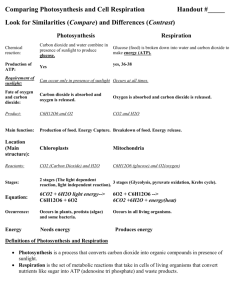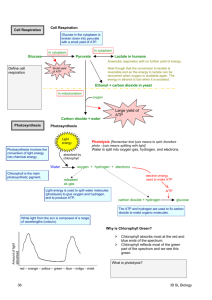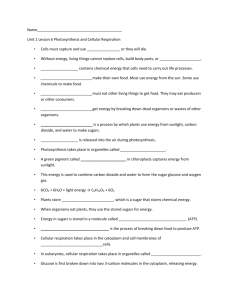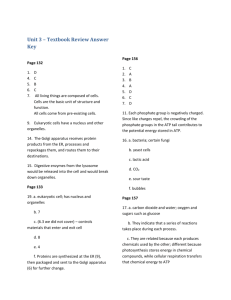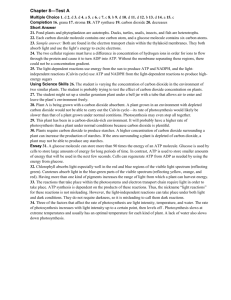IB Biology 2 Bioenergetic Assessment Statements
advertisement
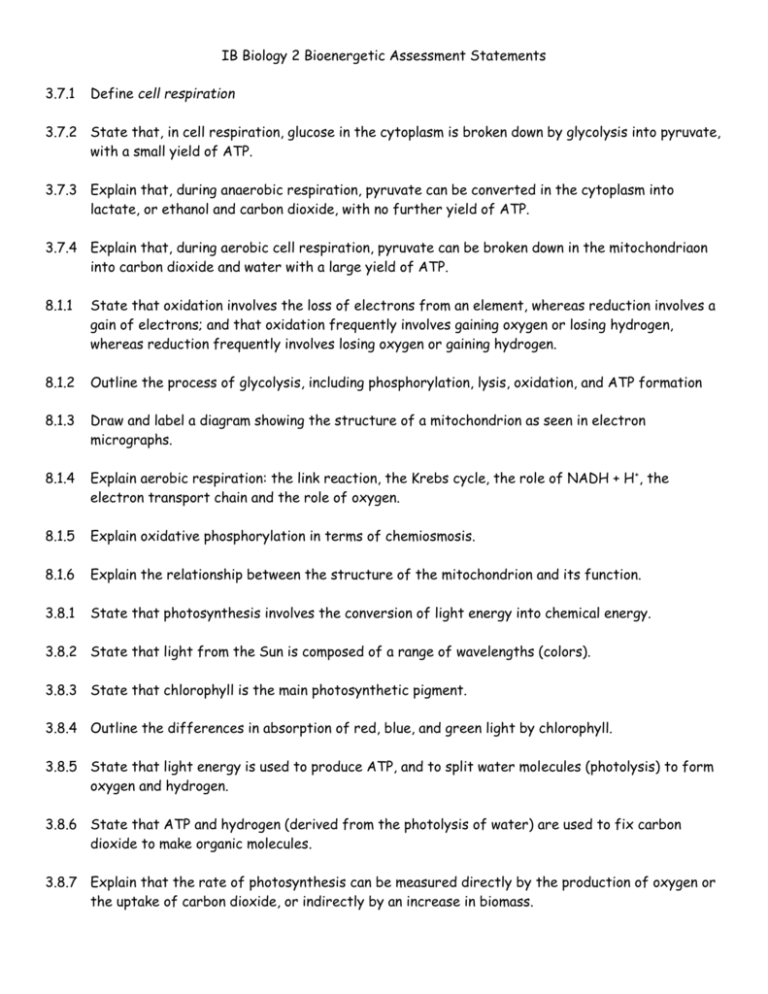
IB Biology 2 Bioenergetic Assessment Statements 3.7.1 Define cell respiration 3.7.2 State that, in cell respiration, glucose in the cytoplasm is broken down by glycolysis into pyruvate, with a small yield of ATP. 3.7.3 Explain that, during anaerobic respiration, pyruvate can be converted in the cytoplasm into lactate, or ethanol and carbon dioxide, with no further yield of ATP. 3.7.4 Explain that, during aerobic cell respiration, pyruvate can be broken down in the mitochondriaon into carbon dioxide and water with a large yield of ATP. 8.1.1 State that oxidation involves the loss of electrons from an element, whereas reduction involves a gain of electrons; and that oxidation frequently involves gaining oxygen or losing hydrogen, whereas reduction frequently involves losing oxygen or gaining hydrogen. 8.1.2 Outline the process of glycolysis, including phosphorylation, lysis, oxidation, and ATP formation 8.1.3 Draw and label a diagram showing the structure of a mitochondrion as seen in electron micrographs. 8.1.4 Explain aerobic respiration: the link reaction, the Krebs cycle, the role of NADH + H+, the electron transport chain and the role of oxygen. 8.1.5 Explain oxidative phosphorylation in terms of chemiosmosis. 8.1.6 Explain the relationship between the structure of the mitochondrion and its function. 3.8.1 State that photosynthesis involves the conversion of light energy into chemical energy. 3.8.2 State that light from the Sun is composed of a range of wavelengths (colors). 3.8.3 State that chlorophyll is the main photosynthetic pigment. 3.8.4 Outline the differences in absorption of red, blue, and green light by chlorophyll. 3.8.5 State that light energy is used to produce ATP, and to split water molecules (photolysis) to form oxygen and hydrogen. 3.8.6 State that ATP and hydrogen (derived from the photolysis of water) are used to fix carbon dioxide to make organic molecules. 3.8.7 Explain that the rate of photosynthesis can be measured directly by the production of oxygen or the uptake of carbon dioxide, or indirectly by an increase in biomass. 3.8.8 Outline the effects of temperature, light intensity and carbon dioxide concentration on the rate of photosynthesis. 8.2.1 Draw and label a diagram showing the structure of a chloroplast as seen in electron micrographs. 8.2.2 State that photosynthesis consists of light-dependent and light-independent reactions. 8.2.3 Explain the light-dependent reactions. 8.2.4 Explain photophosphorylation in terms of chemiosmosis. 8.2.5 Explain the light-independent reactions. 8.2.6 Explain the relationship between the structure of the chloroplast and its functions. 8.2.7 Explain the relationship between the action spectrum and the absorption spectrum of photosynthetic pigments in green plants. 8.2.8 Explain the concept of limiting factors in photosynthesis, with reference to light intensity, temperature and concentration of carbon dioxide.




